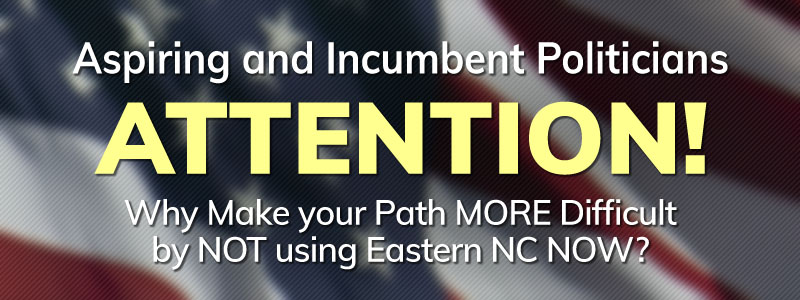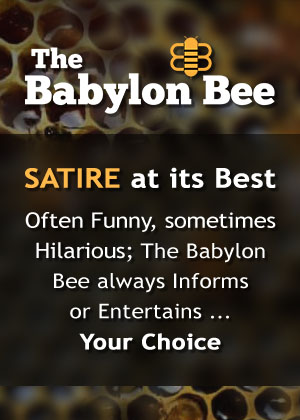The “Secondary Effects” Doctrine and Religious Respect
In light of the serious consequences that have resulted directly from the removal of religion in our schools and in our society, I wish to propose a possible legal pathway to the re-introduction of religion.
There is a doctrine, called the “Secondary Effects” doctrine, which has been applied in cases related to land-use regulation in particular involving the adult entertainment business. This doctrine provides that land-use (zoning) laws and regulations are held to a lower form of judicial review if their primary purpose is to ameliorate the adverse “secondary effects” allegedly associated with certain offensive or controversial speech, rather than to suppress the offending speech itself. With respect to the adult entertainment business, such as nude dancing establishments or stores selling sexual items and material, such “secondary effects” include decreased property values, increased crime, prostitution, confusion and harm to children, loss of residential privacy, security problems, appearances of impropriety, needless sexual arousal, and traffic congestion. I believe we should apply the “Secondary Effects” doctrine to ameliorate the adverse “secondary effects” that result from the removal of religion from our schools and public life. After all, it has already been applied to restrict commercial speech and political speech. Furthermore, in 2000, a federal judge in Kentucky recently used the secondary-effects rationale to uphold the constitutionality of a public high school dress code, determining that the code was really aimed at the “secondary effects of student dress,” such as gang activity, violence and inability to identify campus visitors (Long v. Board of Education of Jefferson County).
The spirit of the First Amendment as envisioned was to protect religious speech and to promote the free exchange of political speech into the “marketplace of ideas.” Justice Oliver Wendell Holmes introduced this basic cornerstone of First Amendment jurisprudence in his dissent in the 1919 case of Abrams v. United States (which upheld the Constitutionality of the Espionage Act) when he wrote that society's ultimate good "is better reached by free trade in ideas - that the best test of truth is the power of the thought to get itself accepted in the competition of the market." But jurisprudence has developed to include a wide range of speech that is equally protected under the First Amendment, including types we in general find offensive and believe have no inherent communication value. Aside from political and religious speech, the First Amendment protects certain forms of expressive conduct (including the burning of our flag, wearing armbands containing a peace sign or even a swastika), visual works, symbolic expression, works of art (including the piece where Mother Mary is covered with elephant dung), music, movies and other forms of entertainment, commercial speech and advertising (although with slightly less protection), sexual expression, nude dancing, and pornography. Speech that is not protected includes: Obscenity (material, which “as a whole, appeals to a prurient interest in sex, patently offends community standards, and is utterly without redeeming social value,” Roth v. U.S. and Miller v. California), fighting words, defamation (libel and slander), child pornography, but not regular pornography), incitement to imminent lawless action, true threats, perjury, treasonous statements, blackmail, solicitation to commit crimes, and plagiarism of copyrighted material.
Over the years, municipalities have attempted to respond to the introduction and proliferation of nude-dancing establishments by using their inherent zoning powers to frustrate the industry’s expansion. City officials have argued that zoning restrictions are a reasonable means of land-use regulation designed to meet the needs of the locality. Many years ago, however, zoning powers could only be used to regulate adult businesses geographically – that is, to disperse the adult businesses to locations throughout the city or to relegate them to a certain area. For example, many ordinances prohibited adult businesses from locating within a certain distance from churches, schools or from other adult businesses. Other ordinances confined adult businesses to certain zoning areas, thereby ensuring that such businesses would not open in residential or other areas. Eventually, this led to judicial creation of the “secondary-effects” doctrine, which allows government officials greater leeway to regulate nude dancing and other forms of adult entertainment if they can show they are combating the allegedly harmful side effects (secondary effects) of such businesses. While these businesses have criticized the doctrine as a path to censorship, the Supreme Court has repeatedly upheld the doctrine (as long as the consideration of harmful effects is done seriously and contemporaneously with the regulation and not as an afterthought).
The “secondary effects” doctrine entered First Amendment jurisprudence in 1976 (although many call it a “legal “fiction” since it actually stands against principles of first amendment protection) with the case of Young v. American Mini Theatres. At issue was an ordinance, the “Anti-Skid Row Ordinance,” which the zoning board amended to provide zoning limitations for adult businesses. The ordinance provided that no adult business could be located within 1,000 feet of any two existing adult businesses or within 500 feet of any residential area. The theater that challenged the law contended that the zoning ordinance was a content-based law that targeted businesses because officials did not like the expressive messages conveyed by the adult material displayed there. The Supreme Court reasoned that the law was not passed to silence offensive expression but rather was passed to prevent the deterioration of the neighborhood. Justice Stevens characterized such neighborhood deterioration when he wrote: “The Common Council’s determination was that a concentration of adult movie theaters causes the area to deteriorate and become a focus of crime, effects which are not attributable to theaters showing other types of films. It is this secondary effect which these zoning ordinances attempt to avoid, not the dissemination of “offensive speech.” Years later, in Renton v. Playtime Theatres, the Supreme Court stated: “To be sure, the ordinance treats theaters that specialize in adult films differently from other kinds of theaters…. However, the Renton ordinance is aimed not at the content of the films shown at adult motion picture theaters, but rather at the secondary effects of such theaters in the surrounding community.” Justice David Souter, who recently resigned from the Supreme Court, was one of the most aggressive members of the Court in applying that doctrine.
In my review of the recent Supreme Court’s religious expression decision (Christian Legal Society v. Martinez, July 28, 2010), entitled “Christian Legal Society v. Martinez - The Supreme Court Just Doesn’t Get It,” I wrote how the removal of prayer and religion from schools had very real and measureable consequences on our youth and on our society. I hinted that it has led to a gradual decline in the values that sustain healthy and productive communities and that guide our youth to accepting productive roles in our society. For example, as I pointed out, when the Supreme Court ordered that religion be taken out of our public schools in 1963, violent crime increased 700% and teenage pregnancies immediately soared to over 700%. The removal of religion has been accompanied by the highest crime rate and the greatest decline in morality that this country has ever seen. I would say these are very alarming and very serious “secondary effects.” I also believe that the removal of any thoughtful reminder of Providence’s blessings in our public life and in our government has resulted in a lack of respect for the institutions created by our Founding Fathers and the principles on which they were designed, an increase in abuse of power, and a moral depravity the likes of which we have never seen before. I would argue that the deterioration following the removal of religion and it’s teachings from our schools, public life, and our government can be legally addressed by applying this doctrine. For those who will claim the “Wall of Separation” between Church and State (another legal fiction as applied by the Supreme Court), the “secondary effects” doctrine would not negate that holding. It would simply state that the interest in our country in fighting the negative effects that comes from a lack of religious recognition outweigh the strict Constitutional scrutiny that usually applies to issues of religion and government/state conduct. Another “secondary effect” of removing religion is the gradual national denial of the basis of our nation on God and Christian values. As our very Declaration of Independence declares to the world: “We hold these truths to be self-evident, that all men are created equal, that they are endowed by their Creator with certain unalienable Rights, that among these are Life, Liberty, and the Pursuit of Happiness”… where “self-evident” means “requiring no proof or explanation”; it is the assumption upon which all else follows). We cannot secure our fundamental liberties in the future without the national acknowledgement of a Creator. Without that nexus, the understanding that our government is created to protect our fundamental liberties falls apart, and instead, the government becomes one that is created to regulate our liberties for the benefit of the nation.
In 1988, Supreme Court Justice William Brennan warned that the secondary-effects doctrine could lead to an “evisceration of First Amendment freedoms.” In his dissent in Boos v. Berry, he cautioned that the use of the doctrine as a cure-all “could set the court on a road that will lead to the evisceration of First Amendment freedoms.” The decision in Everson v. Board of Education (1947) which began the removal of religion from our schools when it held that there is a “Wall of Separation between Church and State” that is “high and impregnable” has also eviscerated First Amendment freedoms. They say two wrongs don’t make a right. Well, maybe in this case, it will. And it might just be a good start.
REFERENCES:
Abrams v. U.S., 250 U.S. 616 (1919)
Long v. Board of Education of Jefferson County (2000)
Roth v. U.S., 354 U.S. 476 (1957)
Miller v. California, 413 U.S. 15 (1973); [legal test outlined on pg. 24]
Young v. American Mini Theatres, 47 U.S., 50 (1976)
Renton v. Playtime Theatres, 475 U.S. 41 (1986)
Boos v. Berry, 485 U.S. 312 (1987)
Everson v. Board of Education, 330 U.S. 1 (1947) [this is the landmark decision which applied the religious clauses of the First Amendment to the government as well as the states and began the gradual removal of religion from public life. This decision also singlehandedly resulted in the rise of the ACLU and empowered anti-religious groups to set us on a course to publicly deny or remain silent on our religious heritage].
Go Back























